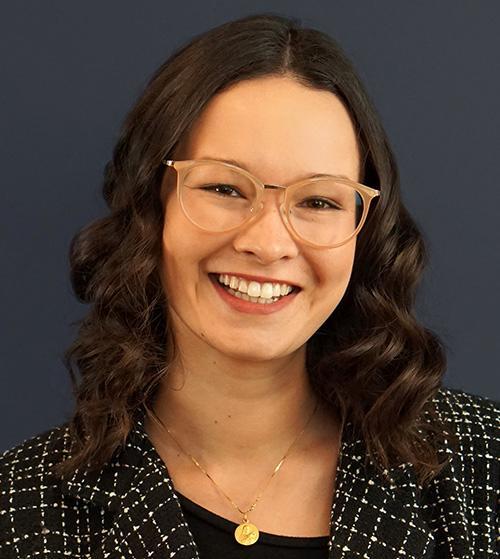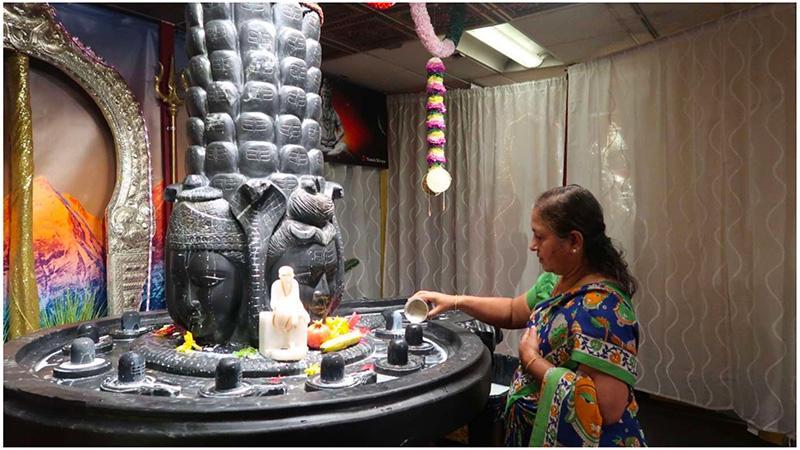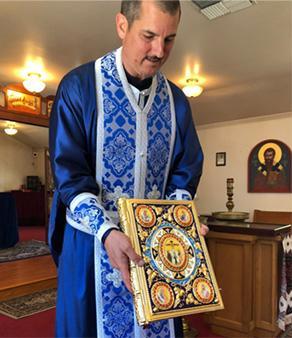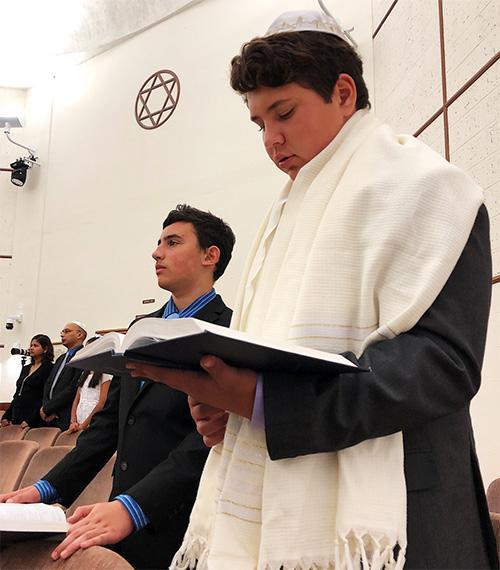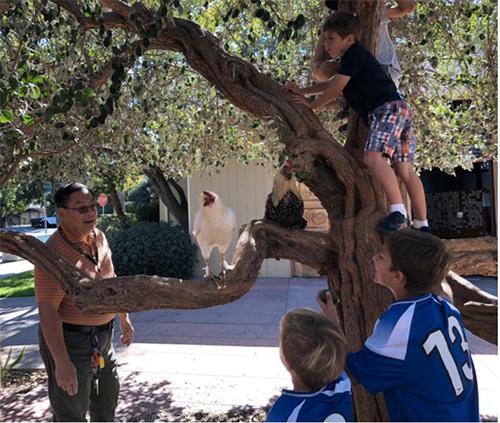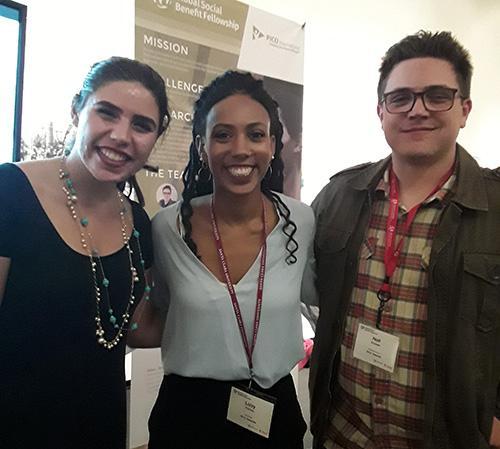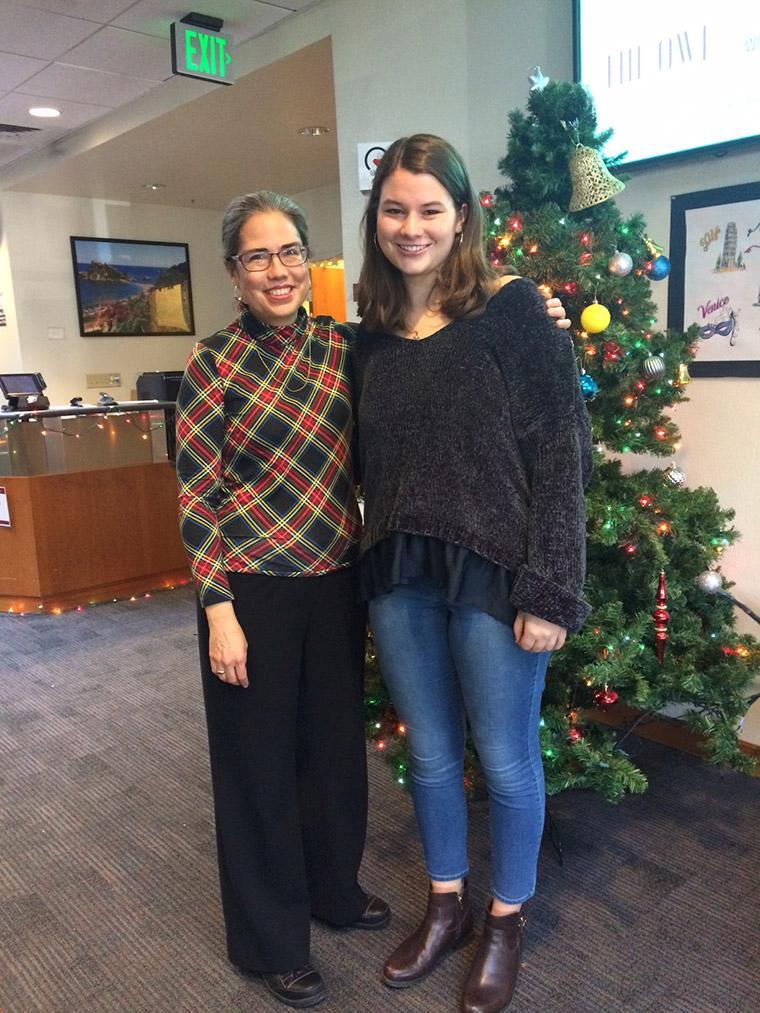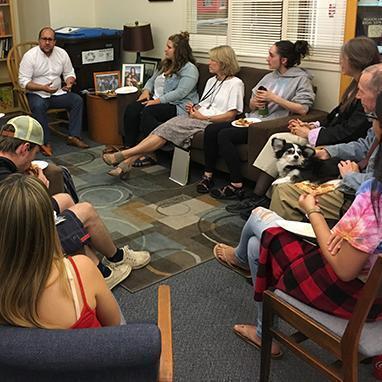
Student Work Fall 2018
Exciting New Work on the Living Religion Collaborative
Last spring, Elizabeth Drescher and colleague Jaime Wright were awarded a Teaching & Technology grant, which allows them to continue work on the development of a geomapping platform, “Encounter,” that tracks student engagement with local religious and spiritual communities and sites. The platform is used in several Religious Studies courses, and data from student field work is gathered on the Living Religion Collaborative website. Working with LRC student fellows Claire Dixon (SCU ’19), Nick Nagy (SCU ’19), and Nick Rogers (SCU ’19), the next iteration of Encounter that Professors Drescher and Wright aim to develop are visual and spatial stories of religion as is lived across the Silicon Valley landscape
Religious Studies Major Claire Dixon on her Experience as a Living Religion Fellow
This past quarter, I have had the opportunity to work with Dr. Drescher in her Exploring Living Religions class. The class covered several elements of living religion and supplied students with the tools to do their own exploring. I joined two groups in their visits to St. Elias Melkite Catholic Church and Our Lady of Peace Catholic Church and Shrine. Both experiences were different and eye-opening, not only to me, but also to the students. I loved reading their field reports where they revealed new insights into religion and the application of concepts that they had learned in class.
The students were not only taught what to observe during their field study, but also how to observe. Emilio Bañuelos was a guest lecturer during two of our classes. He provided students with tips and tricks on how to capture the story and essence of the religious community that they were visiting through photography. During the first class, Emilio provided examples from his own portfolio on different tactics that he uses when encountering an unfamiliar community. He encouraged the students to feel past the seemingly awkward situation and enter into the space with eyes for creativity. After the students’ first field visit, Emilio visited again. Using student examples, Emilio provided constructive criticism to the students for their second round of field visits.
We were all so impressed by the students’ creativity in their pictures that we decided to exhibit them in the Religious Studies Department hallway. We grouped the pictures using the four different elements of living religion.
Religious Studies Major and Living Religion Fellow Nick Nagy’s Experience as TA for RSOC 14 Class
In the Fall 2018 quarter, I was a teacher’s assistant for Prof. Elizabeth Drescher’s RSOC 14 class, Exploring Living Religions. I worked in this position the previous Spring 2018 quarter but assisting in the Fall brought new and exciting challenges. There were many more students in this class than the one I previously helped with and most of the students were First-years. As such, they were trying to juggle the intricacies of adapting to college life and maintaining focus on their schoolwork. I felt that this gave me a distinct opportunity to support them as they tried to understand the expectations of a college course in religion. I compiled a list of religious sites for the students to select from so that they could go out into the field and experience religion as it is practiced. It is my hope that this list of religious sites will continue to grow and be incorporated with our mapping platform so that other classes will be able to benefit from it.
At the beginning of the quarter, alongside a group of students, I visited Duc Vien Buddhist Pagoda in San Jose, which serves as a monastery for female monks who are unable to get ordained in their native Vietnam. In this site we were able to participate in Buddhist prayer and discuss with different community members what they felt Duc Vien meant to them. Having engaged with different religious communities in the Spring 2018 class and now, in this Fall 2018 quarter, has helped me guide students in the right direction in terms of what they should be looking for and noticing in their field research. The use of photography was an exciting part of our class that really helped students engage with practical and very real aspects of religion. I was really quite amazed at the different photos they submitted and the depth of what could be understood about religious community and practice through them. Right now we are working on hanging up these photos in the Religious Studies hallway in the hopes that other students passing through might be intrigued by these nuanced displays of religion. Our hope is that these photos will be on display early in the Winter 2018 quarter. A gallery of photos like this will help students of all majors understand that religion is not easily defined and the boundaries of it are incredibly complex.
I think above all what made me feel proud of the students in this class was their willingness to ask questions and dig deeper to understand what the different concepts we discussed in class mean. Many of them would apologize to me in advance for asking questions but little did they realize that these questions were often highlights throughout my day. I believe I, like many in the fields of academia and religion, derive my own sense of satisfaction and joy from trying to help others come to a better understanding of the world around them. I believe this class was enriching for both me and the students. In my final year at SCU I feel blessed to have engaged so much with a group of new students, as this reminded me of myself at the beginning of my time here, trying to navigate through new and unique experiences. It has helped me look back and see the progress I’ve made while also given me a chance to help others along their own individual journeys. In a way this reminds me of a Buddhist concept we discussed in class known as interbeing. We must experience and realize the sometimes subtle and sometimes enormous impacts we can have on the communities and the people around us. Who knows where I’ll be after I graduate from SCU but I can guarantee it will be, in some way or another, connected to my experience in this class with these students. I look forward to participating in this class again in the Spring 2019 quarter as I end my time here at SCU and I hope to further encourage students to engage their own interests and to understand more about themselves in relation to the world. To the left are some excellent photographs taken by students in this quarter’s class.
Religious Studies Major Claire Dixon on Her Work with Bearings Magazine
Over the past few months, I’ve had the exciting opportunity to work as the Marketing Coordinator for Bearings, a monthly online magazine featuring distinguished writers surrounding the topic of 21st-century ministry. As a Marketing and Religious Studies double major, my role in content creation and promotion is especially exciting to me. With a new issue each month, Bearings has tackled a variety of topics - the 2016 election, spirituality in the wilderness, the Tree of Life Massacre, edges of ministry, and others. Bearings is paving the way for new voices to be heard on niche topics and issues that are relevant to 21st-century ministry.
Among these voices include some SCU Broncos - Connor Holttum ‘20, Nick Nagy ‘19 and my own. Bearings has also given SCU students the opportunity to share their perspectives on 21st-century ministry. In our past September Issue, “Into the Wild,” Connor Holttum ‘20 shared some reflections from his time on the Pacific Northwest Trail in his piece “Making the Spiritual Path by Walking it.” Nick Nagy ‘19 has also shared some of his insights in his two pieces “Don’t Fence us In!” and “Peacemaking in the Middle.” I look forward to sharing a piece in the January Issue about ritual in the modern world.
Near the end of the summer, the Bearings team faced a thrilling undertaking. In an effort for the website to look more cohesive and to fit the monthly issue model, we decided to redesign the Bearings website. For a while, it seemed as if we had bitten off more than we could chew, but with the help of Casey Xuereb ‘19, and the whole team, we successfully released a stunning website just in time for the September issue. The new website features a beautiful interface with sidebars guiding the viewer to issues throughout the years, groups articles by issue, and beautiful images surrounding each issue and article. It was a wonderful success and we are all so proud of the outcome.
The main goal of the redesign was to make Bearings seem more like a cohesive magazine rather than a collection of articles. The redesign gives our contributors the opportunity to connect with the theme of the issue. By grouping the articles in each issue together, we were able to paint a cohesive picture of each issue theme.
I am very excited to continue working with Bearings. Given the strides that we have taken in just a few short months, I am excited to see how we can continue to transform and grow as a magazine.
Professor Teresia Hinga Mentors Students Working in Rwanda
Last summer, Teresia Hinga was assigned to mentor a team of students in the Miller Center Global Fellowship. The team she mentored worked in Rwanda to support PICO’s work in urban and rural settings. They included Jenny Walsh, Liz Kamya (the team leader), and Neil Brorsen.
We're Growing! Recruiting, Mentoring, and Research
Over the last year, the Religious Studies faculty has been strategizing new ways of engaging students and recruiting majors and minors. We are delighted to announce that our ranks are growing. Since Fall 2017, we have gained a steady larger number of minors and majors, with a net growth over the past year of seven minors and one major, for a total of more than 30 students actively engaged in our programs. With more students on board, we are exploring new ways of engaging students in research and expanding course offerings to accommodate the breadth of interest that exists among our students.
In March 2019, Prof. Sarita Tamayo-Moraga and RS major Olivia Hill—Peer Educator for Imagine Interfaith, Community Facilitator for Unity RLC, and Interfaith Intern for Campus Ministry—will use pedagogies and assignments from the course "Ways of Understanding Religion" as resources for teaching students how to resist internal and external religious stereotypes in the academic study of religion to resist hatred and promote deep learning about and respect of religious traditions. The project will attend especially to ways of resisting the national rhetoric that Muslims cannot be American and the association of all Muslims with terrorism, while also attending to biases that hold that one's own religion, in particular Christianity, can do no wrong. They will do an independent study to prepare research for the conference.
